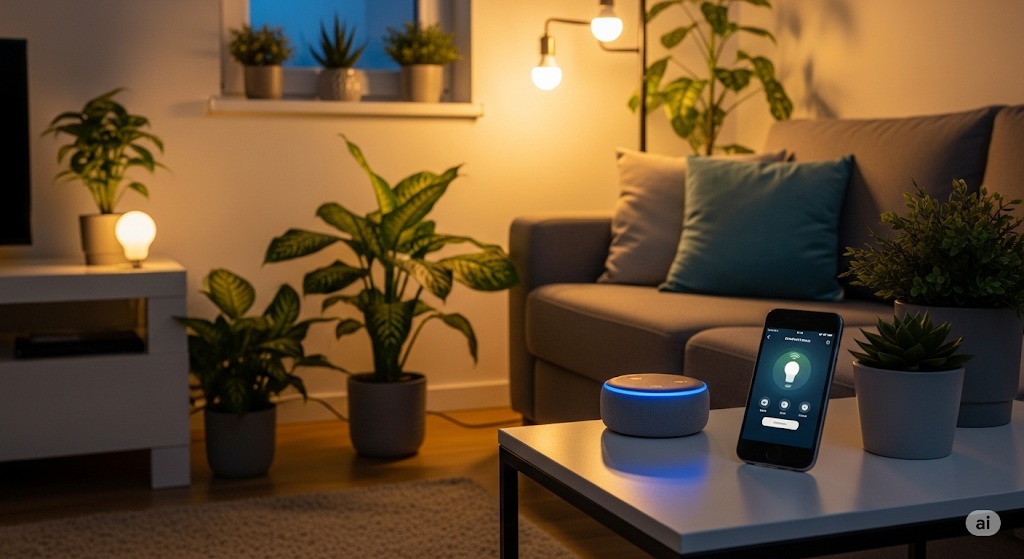Introduction
Turning your house into a smart home in 2025 doesn’t need to drain your savings. With affordable devices and a clear plan, you can enhance your home’s security, convenience, and energy efficiency without overspending.
This guide will show you practical, budget-friendly steps to transform your home into a smart home, even if you’re on a tight budget.
1. Start with Smart Plugs
Smart plugs are among the cheapest and easiest smart devices to begin with.
-
Control lights, fans, and appliances remotely.
-
Schedule on/off times to save energy.
-
Compatible with Alexa and Google Home.
Tip: Brands like Wipro, TP-Link, and Amazon Smart Plug offer reliable, low-cost options.
2. Use Smart Bulbs Strategically
Replace traditional bulbs in key areas like the living room and bedroom with smart bulbs.
-
Control brightness and color with your phone or voice.
-
Automate lighting schedules for convenience and energy savings.
-
Avoid replacing every bulb at once to manage cost.
3. Affordable Smart Speakers
A smart speaker becomes your central smart home hub.
-
Amazon Echo Dot and Google Nest Mini are affordable options.
-
Use them to control devices, play music, set reminders, and get weather updates hands-free.
4. Budget-Friendly Smart Security
Security is a major reason people switch to smart homes.
-
Install smart door sensors and window sensors to monitor entry points.
-
Use affordable indoor cameras from Xiaomi or TP-Link to monitor your home remotely.
-
Add a smart video doorbell for extra security without hiring guards.
5. Energy Efficiency with Smart Power Strips
Replace regular extension boards with smart power strips to control multiple devices remotely and monitor power consumption, helping reduce your electricity bill.
6. DIY Smart Home Automation with Routines
-
Use Alexa or Google Home routines to automate your devices.
-
Example: “Good Morning” routine to turn on lights and start your coffee machine.
-
Example: “Good Night” routine to turn off all lights and lock smart locks.
This gives your home a smart upgrade without buying expensive automation systems.
7. Don’t Rush, Upgrade in Phases
-
Focus on the most-used areas first.
-
Add devices gradually, monitoring how they improve your daily life.
-
This ensures you build your smart home efficiently while controlling expenses.
FAQs
Q: Do I need a hub for a smart home?
A: Many devices now work without hubs, using Wi-Fi or Bluetooth. A smart speaker can often serve as your hub.
Q: Is a smart home secure?
A: Yes, but always change default passwords, keep apps updated, and secure your Wi-Fi network.
Q: Can I set up a smart home without professional help?
A: Absolutely. Most devices are DIY-friendly with easy-to-follow app instructions.
Final Thoughts
Converting your home into a smart home in 2025 is easier and more affordable than ever. By starting small with plugs, bulbs, and speakers, and expanding gradually, you can enjoy a smarter, more efficient, and secure home without overspending.
Are you planning to start your smart home journey? Share your thoughts in the comments below!

